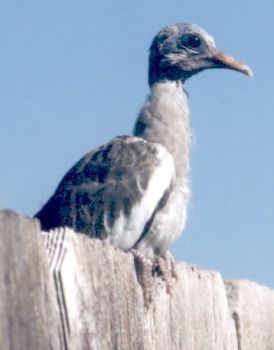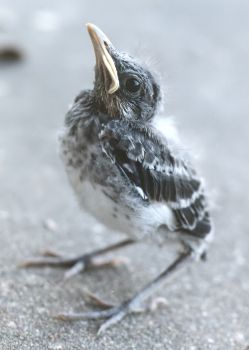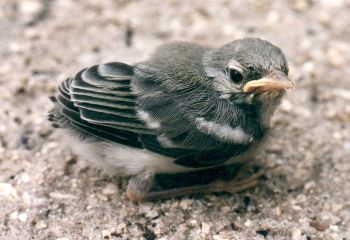Baby Birds
by Valerie (June 25, 2000)
revised September 6, 2003

The first of our feathered friends is a white-winged dove (Zenaida asiatica). These birds often don't see us, or if they do, they aren't scared enough to fly away, and we can usually get quite close. They are attracted to our yard because we have several dishes of water and they are frequently evident by their loud calls or raucous mating behavior up in the trees. This youngster hasn't lost all its baby fluff quite yet, but still has enough flight feathers to get around.
Although the last bird shown here is very photogenic, I have to admit it wasn't photographed in our yard, or even in Texas. It was seen in Florida during a camping trip and I don't have a positive identification for it. It's probably a vireo (Vireo sp.) or flycatcher (Empidonax sp.), and it was very small; only about 2½ inches long. Of course, the missing tail (which seems to be the last thing to grow out on fledglings) makes it look even more midget-like than normal. An amusing detail of many young birds is the downward turn of the inner corners of their beaks, making them appear to have a perpetual frown. Of course, they could just be dour over having to leave their nice secure nests and face the world.
|

